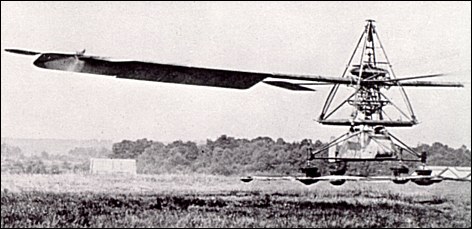 The world’s first guided missile was invented in the 1870s by an ingenious Irish man, Louis Brennan. Brennan also invented what is probably the first tilting train and an early type of helicopter.
The world’s first guided missile was invented in the 1870s by an ingenious Irish man, Louis Brennan. Brennan also invented what is probably the first tilting train and an early type of helicopter.
Brennan’s guided missile was a torpedo steered by wires. It was designed to defend naval ports and harbours – not as an attacking weapon – and the British Navy paid Brennan handsomely for his idea, installing his torpedo system around the empire, from Hong Kong to Malta to Cork.
For nearly 30 years, it was the best way to defend a port, yet it was never “fired in anger” and, so far as we know, never killed anyone – which must be unusual for a weapon that was considered to be very successful.
Discover lots more Irish ideas and inventions: on our fun, friendly and informative Ingenious Dublin walking tours.
Mayo to Melbourne
Louis Brennan (1852-1932) was born in Castlebar, Co Mayo, but his family emigrated to Melbourne, Australia when he was about nine. He was a natural mechanic and talented engineer who started work in a clockmakers, and by his 20s was working for a well-known Australian engineering firm. He had already invented a mincing machine and a window safety catch before he had his ‘lightbulb’ idea for a torpedo that could be steered.
According to one account, he was playing with a reel of thread and noticed that, when he pulled the thread, the reel moved forward. That got him thinking about things that move need to move forward but don’t need to come back, and the rest is military history.
Guided missile

Replica of a Brennan torpedo
His guided missile was a torpedo with two long reels of wire in its ‘belly’, one left, and one right, that could be used to steer the torpedo, like the reins on a horse. The torpedo was fired from a launching station on shore, and the gunner could steer the torpedo to its target, up to 3 miles away.
You can still see the launching rails on a slipway at Fort Camden near Crosshaven, in Cork, where the system was installed.
The torpedo travelled just under the surface, with a little flag showing above the water, so that its movements could be tracked. The British Navy paid Brennan handsomely for his invention, and brought him to England to set up and run a factory making his ‘Brennan torpedoes’.
Now successful and wealthy, Brennan switched his energies to revolutionising train design. He invented a new monorail design that he hoped would be better, cheaper and quicker to build, because it needed just a single rail, instead of the traditional two rails.
First tilting train?

Brennan’s gyro-car, on a test-drive
His train ran on a central ‘wheel’, and used gyroscopes to keep it balanced. It could tilt, and easily handled tight corners and steep climbs. Brennan thought it would be perfect in remote and difficult terrain, such as the Burmese jungle and the mountainous Himalayas, where the British Empire was expanding.
He successfully demonstrated the design, but the authorities worried that the train would topple if one of the gyroscopes failed. Brennan couldn’t persuade them, and the project failed. But Brennan had poured all his resources into the project and was now broke, so he returned to work as a military consultant during World War I.
After the war, he turned his energies to inventing an aircraft that could hover and take off and land vertically. Once again, the British military backed his research, and even Churchill took a personal interest.

Louis Brennan’s prototype helicopter
Test flights took place in a heavily guarded hangar, and the unusual craft successfully rose a few feet in test flights, albeit still tied down, and even carried a couple of men. Unfortunately, it failed during one demonstration and once again the military decided not to proceed, and switched to alternative designs.
Louis Brennan, one of the ingenious Irish, was hit by a car while on holiday in Switzerland, and died shortly afterwards of his injuries, aged 79.
He was buried in an unmarked plot at St Mary’s Roman Cemetery, Kensal Green, London. A gravestone was finally erected in 2014 by one of his county-men, Taoiseach (Irish prime minister) Enda Kenny.






Comments are closed.